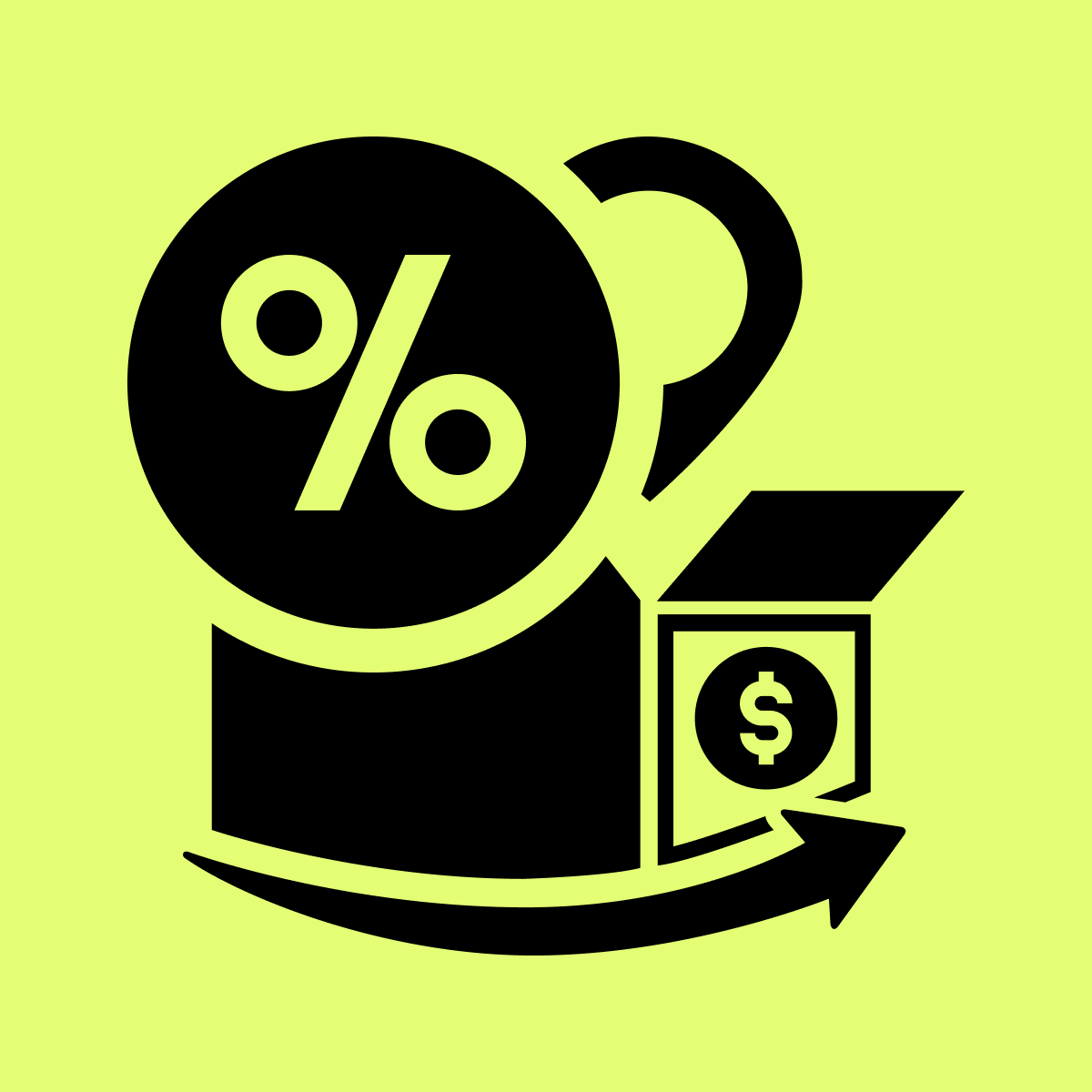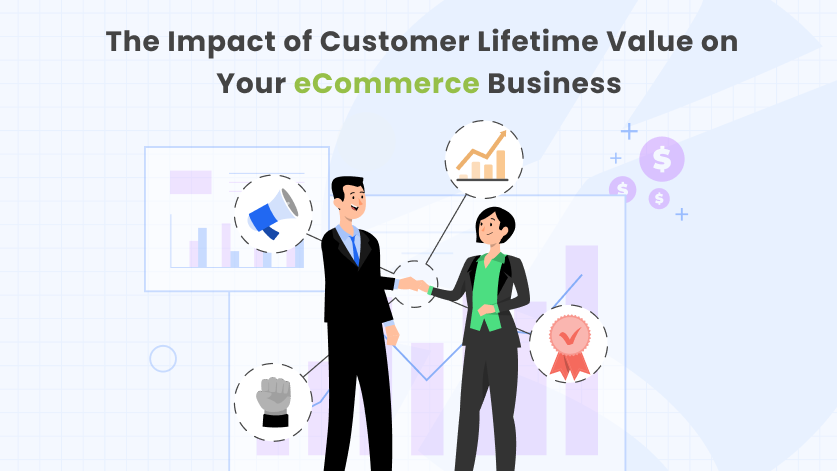Understanding the importance of customer lifetime value (CLV) in an eCommerce business is critical for long-term success. The importance of Shopify customer lifetime value to your eCommerce business cannot be overstated.
In this article, we will look at the concept of customer lifetime value (CLV), its implications, and how it can help you grow your business. Let’s see how you can use this powerful metric to not only increase your revenue but also build long-term customer relationships.
Remember that every customer has the potential to generate revenue for your business if you engage them properly. In this case, customer lifetime value refers to the value of the entire relationship between you and your online business.
You can learn about your business strategy and highlight your most valuable customers for long-term success by looking at your customer’s lifetime value.
Contents
hide- 1. What is Customer Lifetime Value?
- 2. How to Calculate Customer Lifetime Value
- 3. Benefits of Tracking Customer Lifetime Value
- 4. Why does Customer Lifetime Value Matter in Online Business?
- 5. What is the Average Customer Lifetime Value by Industry?
- 6. How can you Increase Customer Lifetime Value on Shopify Store?
- 6.1 Enhance Customer Experience
- 6.2 Upselling and Cross-Selling
- 6.3 Implement Loyalty Programs
- 6.4 Subscription Models
- 7. Conclusion
- 8. Frequently Asked Questions (FAQ)
What is Customer Lifetime Value?
Customer lifetime value (CLV) is a metric that represents the total net profit a business can expect to generate from customers during their relationship with your business. It can be an initial purchase, repeat purchase, and the average duration of their relationship with your business. Customer lifetime value helps businesses understand and measure current customer loyalty.
Here is an Example of How to Calculate Customer Lifetime Value:
Let’s say a customer pays $20 per month for a 1-year subscription to XYZ company. The company’s profit margin per month is $5.
So, the customer lifetime value for this customer would be $20 x 12 x $5 = $1,200.
Customer lifetime value (CLV) is a crucial metric for businesses because it helps them make informed decisions about marketing, customer acquisition strategies, and customer relationship management.
It allows businesses to allocate resources more efficiently by focusing on customers who are likely to provide higher long-term value, which will increase sales and sustainable growth.
Here are Some of the Benefits of Tracking Customer Lifetime Value:
- It can help you in marketing efforts. By understanding which customers are most valuable to your business, you can focus your marketing efforts on those customers.
- It can help set a fair price for both you and your customers. If you know how much profit you can expect to make from each customer, you can set prices that reflect that value.
- It can help you identify opportunities to increase customer loyalty. By understanding how long customers typically stay with your business, you can identify opportunities to improve the customer experience and make them more likely to stay.
If you’re not tracking customer lifetime value, I recommend you start tracking this metric. It is a critical metric that can help you make better decisions for your business growth.
Why does Customer Lifetime Value Matter in Online Business?
Customer lifetime value (CLV) matters in online business because it helps businesses understand the value of their customers and make better decisions about how to acquire and retain them.
Here are some of the reasons why CLV matters in online business:
1. Set Realistic Customer Acquisition Budgets: The cost of acquiring a new customer can be high, so it’s important to know how much money each customer is worth to the business in order to set a realistic budget for customer acquisition. If the CLV is low, the business may need to spend more on customer acquisition to make a profit.
2. Identify High-Value Customers: Not all customers are equal. Some customers are more valuable to a business than others. By tracking CLV, businesses can identify their high-value customers and focus their marketing efforts on retaining them.
3. Make Better Marketing Decisions: Customer lifetime value can help your Shopify business to make better marketing decisions. For example, businesses can use CLV to determine which marketing channels are most effective at acquiring and retaining customers. They can also use CLV to set prices and promotions that are more likely to appeal to their target customers.
4. Measure the Effectiveness of Marketing Campaigns: CLV can be used to measure the effectiveness of a marketing campaign. By tracking CLV before and after a marketing campaign, businesses can see how much the campaign has increased the value of their customers.
5. Strategic Resource Allocation: CLV helps businesses allocate their resources more efficiently by prioritizing efforts on high-value customers. By identifying and targeting more potential customers for long-term engagement, businesses can optimize their marketing campaigns, product development, and customer service strategies.
6. Maximize Profitability: Focusing on customers with high CLV can increase profitability. Businesses can increase their profit by creating long-term relationships and encouraging repeat purchases.
7. Improved Customer Retention: Understanding CLV allows businesses to identify patterns and factors that contribute to customer churn. Armed with this knowledge, they can implement strategies to increase customer satisfaction, address pain points, and ultimately improve customer retention rates.
8. Informed Marketing Strategies: CLV enables businesses to tailor their marketing efforts to different customer segments. By categorizing customers based on their potential value, businesses can create personalized marketing campaigns that resonate with specific groups, increasing conversion rates and engagement.
9. Enhanced Customer Experience: A focus on CLV encourages businesses to prioritize delivering exceptional customer experiences. Satisfied customers are more likely to be loyal and recommend the brand to others, thus contributing to higher CLV.
10. Long-Term Growth and Sustainability: By optimizing CLV, businesses can promote sustainable business growth. This approach shifts the focus from short-term gains to long-term relationships and a solid customer base that can support the business in the long run.
11. Data-Driven Decision-Making: CLV is a data-driven metric that guides business decisions. Using CLV data allows businesses to make better decisions based on current customer behavior and trends rather than intuition or assumptions.
12. Competitive Advantage: Businesses that effectively utilize CLV gain a competitive advantage. They can beat competitors by better understanding their customers, predicting future revenue streams, and adopting strategies to meet changing customer needs.
What is the Average Customer Lifetime Value by Industry?
The average Customer Lifetime Value (CLV) can vary significantly by industry due to factors such as product pricing, customer behavior, retention rates, and business models.
While I can provide you with a general overview of CLV ranges in various industries, please keep in mind that these figures are estimates and may change over time. For the most accurate and up-to-date information, it is important to conduct industry-specific research and analysis.
Remember that these are only estimates, and actual CLV figures may vary depending on specific business strategies, customer segmentation, and market conditions.
Businesses must analyze their own data in order to effectively calculate and optimize CLV for their industry and unique circumstances.
How can you Increase Customer Lifetime Value on the Shopify Store?
There are many ways to increase customer lifetime value (CLV) on your Shopify store.
Here are a few of the most effective strategies:
1. Enhance Customer Experience:
Providing a seamless and great experience at every touchpoint creates a positive impression of your business. This includes customer support, easy navigation on your online store, and personal interactions with your customers. This shows that you care about your customers.
This includes several aspects:
- User-Friendly Interface: Design your online store layout simple, easy to use, and navigate. Make sure that your customers can find what they’re looking for quickly and without frustration.
- Quickly Customer Support: Provide effective and quick customer support through multiple channels such as live chat, email, or phone. Respond to customer inquiries and questions as soon as possible to show that you value their time and needs.
- Seamless Checkout Process: Simplify the checkout process to reduce effort and cart abandonment rates. Offer multiple payment options and ensure a secure payment gateway can build trust.
- Post-Purchase Engagement: Connect with customers even after a purchase. Send order confirmations, shipping updates, and post-purchase follow-ups to keep them informed and engaged.
- Gathering Feedback: Always seek and welcome customer feedback to better understand their problems and areas for improvement. To gather information, use survey forms, reviews, exit forms, and social media interactions.
- Continuous Improvement: Regularly analyze customer behavior to identify areas where the customer experience can be improved. Use this data-driven approach to make continuous improvements.
2. Upselling and Cross-Selling:
Businesses can use upselling and cross-selling as strategic techniques to increase customer value, increase revenue, and encourage customer engagement. These approaches seek to maximize the value of each customer interaction and transaction, resulting in higher customer lifetime value (CLV).
- Strategic Implementation: Strategically combining these techniques requires understanding customer preferences, needs, and purchase history. Businesses can create a seamless and personalized shopping journey by recommending cross-sell and upsell items that complement the main purchase.
- Enhanced Customer Experience: When done correctly, cross-selling and upselling improve the overall customer experience. Cross-selling gives customers easier ways to complete their purchases with related items while upselling allows them to make more informed decisions based on their preferences.
- Driving Long-Term Value: Both strategies help increase CLV by increasing customer engagement, loyalty, and maximizing the revenue potential of each interaction. Cross-selling and upselling leverage existing customer relationships, demonstrating the brand’s dedication to meeting their changing needs and preferences.
- Balancing Customer Needs and Goals: While these techniques are intended to increase revenue, it is important to strike a balance between business goals and customer interests. Recommendations should be specific to current customer needs and provide tangible value, resulting in increased satisfaction and long-term loyalty.
3. Implement Loyalty Programs:
Loyalty programs are designed to reward and encourage customers for their recurring business and involvement. These efforts play an important role in increasing the customer lifetime value (CLV) for your Shopify store by building strong connections, promoting client retention, and driving repeat transactions.
- Rewards and Incentives: Loyalty programs offer a variety of benefits, such as discounts, exclusive access, cashback, or rewards for each purchase. These incentives promote a sense of value and appreciation among consumers, encouraging them to choose your brand over competitors.
- Tiered Systems: Many loyalty programs implement tiered structures, in which customers progress to higher tiers based on their level of engagement or spending. Each tier unlocks more significant rewards, encouraging customers to interact with your business more frequently.
- Engagement Opportunities: Loyalty programs allow customers to interact with your business in ways apart from transactions. This can include referring friends, writing reviews, participating in contests, or interacting on social media.
- Communication and Notifications: Keep participants informed about their loyalty status, rewards, and upcoming rewards with regular email notifications. This not only keeps people engaged but also creates excitement for future interactions with your business.
- Exclusive Access: Offer loyalty members early access to new products, special sales, or limited-time offers. This sense of exclusivity encourages their engagement with your business and repeat purchases.
4. Subscription Models:
The subscription-based business model offers recurring products or services in exchange for a monthly fee. This strategy helps increase customer lifetime value (CLV) for your Shopify business by generating a consistent revenue stream and growing long-term customer relationships.
- Recurring Revenue: Subscription models provide a steady and predictable income, allowing businesses to better forecast and manage cash flow. This stability can lead to more strategic resource allocation and business planning.
- Customer Commitment: Subscribers commit to ongoing payments, increasing the likelihood of repeat purchases over an extended period. This commitment fosters a sense of loyalty and reduces the need for constant customer acquisition efforts.
- Upsell and Cross-Sell Opportunities: Businesses can implement upselling and cross-selling strategies into existing subscription plans by offering premium subscriptions as an add-on.
- Data-Driven Insights: Subscription models generate a wealth of data on customer behavior, preferences, and engagement patterns. Analyzing this data can offer insights for refining offerings, improving customer satisfaction, and optimizing marketing efforts.
If you want to start a subscription business here is the complete guide on how to start a subscription business with Shopify.
Conclusion:
Customer lifetime value (CLV) is a crucial metric that businesses can use to increase their profits. By understanding CLV, businesses can make better decisions about marketing, pricing, customer service, and product development.
Here are some of the key points we discussed:
- CLV is the total net profit a company can expect to generate from a customer throughout their entire relationship with your business.
- There are many ways to increase CLV, such as focusing on enhancing customer experience, upselling and cross-selling, implementing loyalty programs, and subscription models, offering rewards, customer retention, long-term growth and sustainability, and providing excellent customer service.
- By following the strategies mentioned above, businesses can increase the customer lifetime value (CLV) of their Shopify store and boost their profits.
What will you do to improve your customer lifetime value (CLV) for your eCommerce business? I’d love to hear your thoughts in the comments!








